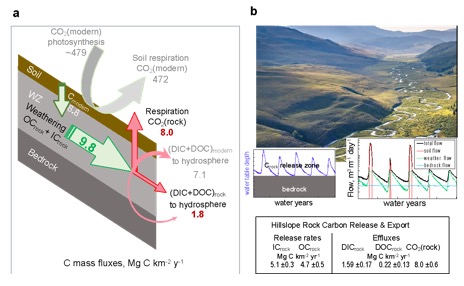
Watershed Function
Science Focus Area
Functional Traits and Watershed Resilience
The Watershed Function SFA is an integrated, multilaboratory project focused on interacting impacts of warming and drought on the hydro-biogeochemical functioning of mountainous watersheds and their retention or release of water, carbon, nitrogen, and other elements.
Photo Credit: Jeremy Snyder (LBNL)
What is the Watershed Function SFA?
The Watershed Function SFA is an integrated, multilaboratory project focused on interacting impacts of warming and drought on the hydro-biogeochemical functioning of mountainous watersheds and their retention or release of water, carbon, nitrogen, and other elements.
The SFA aims to understand mechanisms underlying the resistance and resilience of watersheds to disturbance to predict pathways of watershed adaptation to future climate conditions.


Why Study Mountainous Watersheds?
Watersheds provide key resources for human populations, with pressing demands for clean water, food, and energy. In parallel, interacting disturbances are significantly reshaping interactions within watersheds throughout the world.
A deeper understanding of mountainous watershed functions is needed as changing mountainous hydroclimate is estimated to cause trillion dollar impacts across the Western United States in coming decades.
Lead Institutions
Partners












